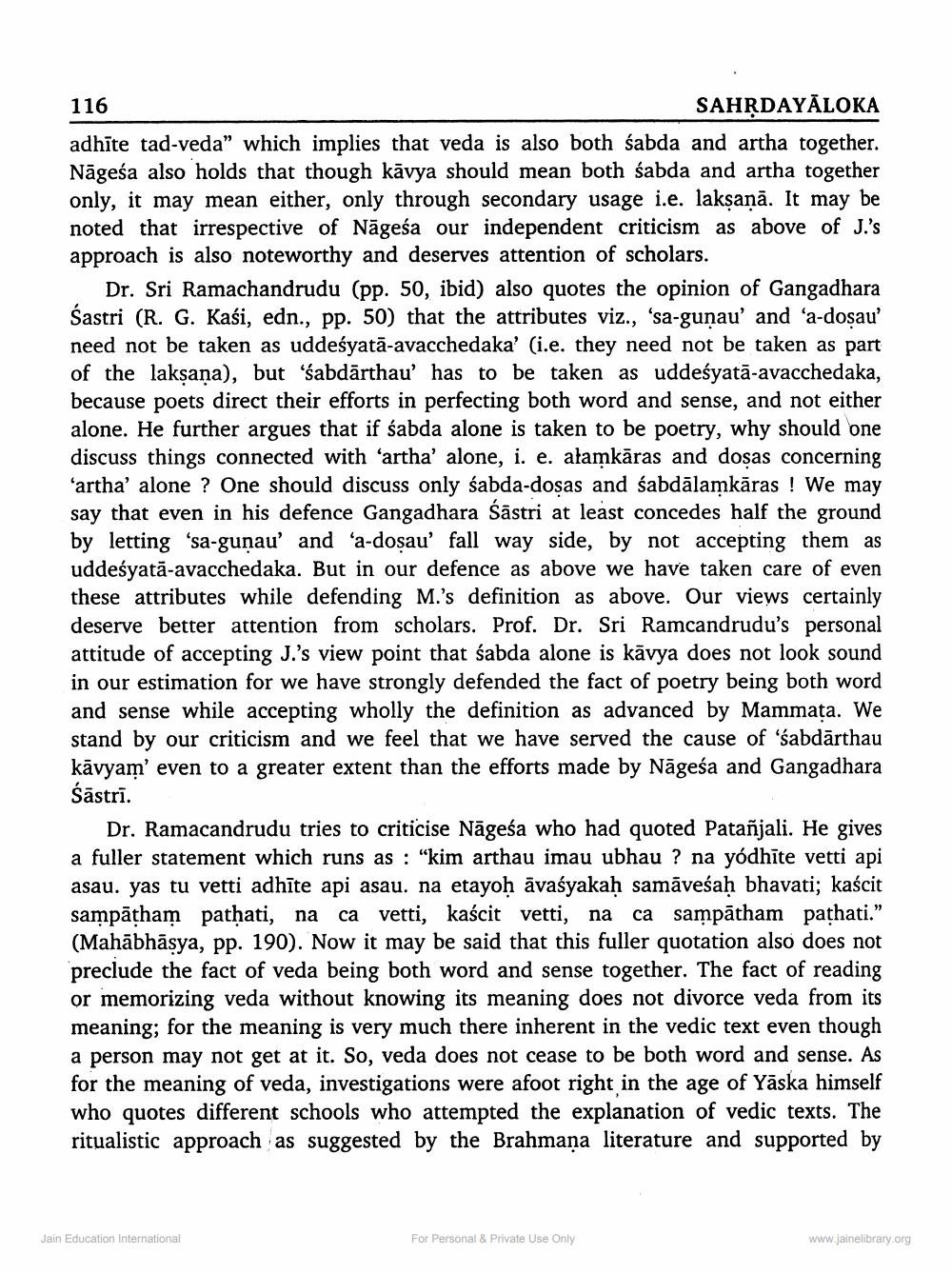________________
116
SAHRDAYĀLOKA adhīte tad-veda" which implies that veda is also both sabda and artha together. Nāgesa also holds that though kāvya should mean both sabda and artha together only, it may mean either, only through secondary usage i.e. laksanā. It may be noted that irrespective of Nāgesa our independent criticism as above of J.'s approach is also noteworthy and deserves attention of scholars.
Dr. Sri Ramachandrudu (pp. 50, ibid) also quotes the opinion of Gangadhara Sastri (R. G. Kasi, edn., pp. 50) that the attributes viz., 'sa-gunau' and 'a-dosau' need not be taken as uddeśyatā-avacchedaka' (i.e. they need not be taken as part of the laksana), but 'sabdārthau' has to be taken as uddesyatā-avacchedaka, because poets direct their efforts in perfecting both word and sense, and not either alone. He further argues that if sabda alone is taken to be poetry, why should one discuss things connected with 'artha' alone, i. e. alamkāras and dosas concerning 'artha' alone ? One should discuss only sabda-dosas and sabdālamkāras ! We may say that even in his defence Gangadhara Šāstri at least concedes half the ground by letting 'sa-gunau' and 'a-dosau' fall way side, by not accepting them as uddeśyata-avacchedaka. But in our defence as above we have taken care of even these attributes while defending M.'s definition as above. Our views certainly deserve better attention from scholars. Prof. Dr. Sri Ramcandrudu's personal attitude of accepting J.'s view point that śabda alone is kāvya does not look sound in our estimation for we have strongly defended the fact of poetry being both word and sense while accepting wholly the definition as advanced by Mammața. We stand by our criticism and we feel that we have served the cause of 'sabdārthau kāvyam' even to a greater extent than the efforts made by Nāgeśa and Gangadhara Śāstrī.
Dr. Ramacandrudu tries to criticise Nāgesa who had quoted Patañjali. He gives a fuller statement which runs as : "kim arthau imau ubhau ? na yódhīte vetti api asau. yas tu vetti adhīte api asau. na etayoh āvaśyakaḥ samāveśaḥ bhavati; kaścit sampātham pathati, na ca vetti, kaścit vetti, na ca sampātham pathati." (Mahābhāsya, pp. 190). Now it may be said that this fuller quotation also does not preclude the fact of veda being both word and sense together. The fact of reading or memorizing veda without knowing its meaning does not divorce veda from its meaning; for the meaning is very much there inherent in the vedic text even though a person may not get at it. So, veda does not cease to be both word and sense. As for the meaning of veda, investigations were afoot right in the age of Yäska himself who quotes different schools who attempted the explanation of vedic texts. The ritualistic approach as suggested by the Brahmana literature and supported by
Jain Education International
For Personal & Private Use Only
www.jainelibrary.org




